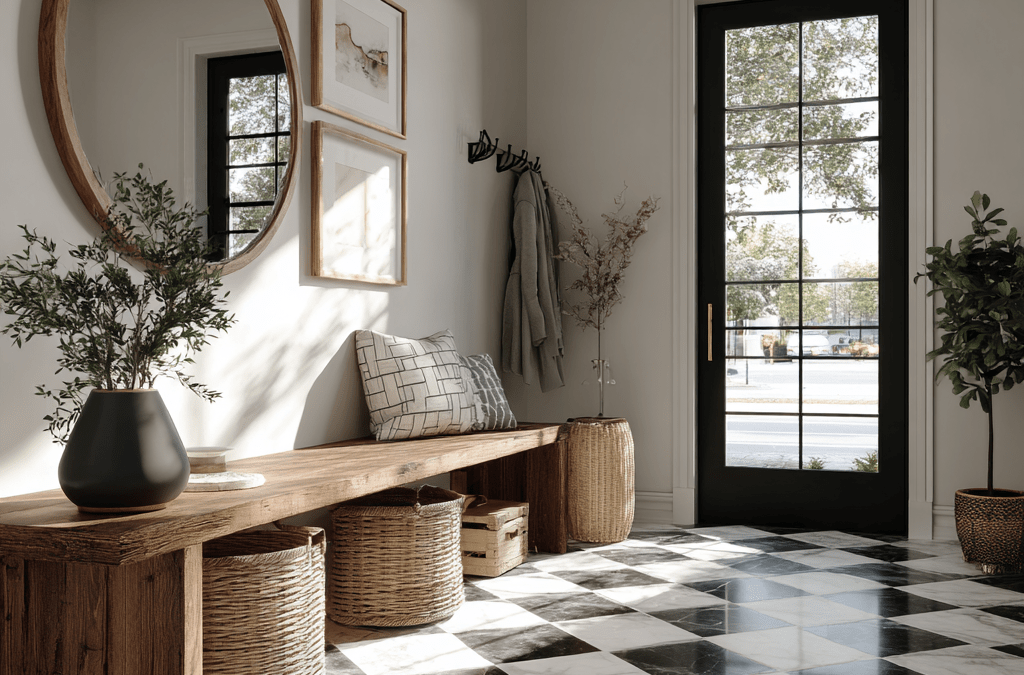There’s nothing like the small domestic mystery of one room feeling like a sauna while the bedroom down the hall could double as a freezer. For busy families, uneven home temperatures are more than an annoyance — they can mean cranky kids, wasted energy, and extra stress when you just want everyone comfortable. The good news: many causes are simple to diagnose, and a few kid-friendly checks and décor-conscious fixes can restore balance without a major renovation.
Below are the common reasons your home has hot and cold spots, easy checks you can do with little hands (or at least with kids nearby), quick fixes that look good in a family home, and when to call a pro.
Common causes of hot and cold spots

1. Zoning and airflow issues
Some homes are effectively split into temperature zones — intended or not. If dampers, vents, or thermostats aren’t balanced, one side of the house can get most of the heated or cooled air while another starves.
2. Blocked or closed vents
Furniture, toys, rugs, or the family dog’s bed can block registers. It’s surprisingly common for a sofa or bookcase to be blocking airflow in a living space.
3. Old or miscalibrated thermostat
If your thermostat is old, placed in a drafty hallway, or reading temperature near a sunny window, it may tell the system the house is warm when several rooms are still cold.
4. Insulation and air leaks
Poor insulation in walls, ceilings, or around windows lets heat escape in winter and seeps in during summer—especially in older homes or rooms above garages and near eaves.
5. Ductwork problems
Leaky or poorly sized ducts can lose the air you paid to heat or cool. In multi-story homes, ducts that run long distances can lose performance before the air reaches far rooms.
6. Room-specific causes
South-facing rooms may be warmer in the day; basements are often colder. Kitchens and rooms with many electronics can run warmer than adjacent spaces.
Quick, family-friendly checks you can do today (with kids underfoot)
These are safe, low-effort steps you can complete in 10–20 minutes — kid-friendly and useful.
- Walk the house: Close doors and check each room’s temperature by feel. Note rooms that are noticeably colder/hotter.
- Check vents: Make sure registers are open and not blocked by furniture, toys, or dust bunnies. If kids made a fort, it might be blocking airflow!
- Look at the thermostat: Is it on an inside wall away from windows and drafts? If it lives on a sunny wall, it may be tricked into thinking it’s warmer than the rest of the house.
- Replace the filter: A clogged filter reduces flow. Swapping to a clean filter can help performance immediately.
- Feel the vents: With the system running, put your hand near each vent (careful — some will be warm or cool). Weak airflow suggests a blocked duct or closed damper.
- Check window seals and curtains: Feel for drafts and make sure heavyweight curtains are closed on cold nights.
Quick fixes that don’t ruin your décor

You want practical solutions that still look like part of the home, not a maintenance cave.
- Rearrange, don’t block: Pull sofas a few inches from vents; use low-profile storage near registers. Floating shelves and wall-mounted storage keep airflow free.
- Use rugs and thermal curtains: Rugs add insulation to cold floors; lined curtains keep heat in during winter and out in summer.
- Redistribute heat with fans: Ceiling fans (set clockwise in winter on low) can gently push warm air down. Small oscillating fans help circulate air between rooms.
- Add door drafts and thresholds: Simple door sweeps and weatherstripping are inexpensive and invisible fixes.
- Smart thermostat scheduling: A programmable thermostat that follows your family routine (nap time, afterschool rush, bedtime) can keep comfort consistent and reduce wasted energy.
When to call a professional
If your quick checks don’t fix the problem, you’ll want a professional diagnosis. Signs it’s time to call someone include wildly fluctuating temperatures, persistent cold bedrooms despite open vents, frequent short-cycling of your HVAC (it turns on and off rapidly), strange smells coming from vents, or unusual noises from your system. If you’ve tried the quick checks and still have uneven temperatures, a trusted local Wethersfield HVAC Contractor can diagnose zoning problems or recommend a simple, right-sized fix. A trained technician can test duct pressure, check for leaks, assess system sizing, and advise on cost-effective improvements.
Safety notes for families:
- Never block vents with flammable materials.
- If you smell anything like gas, evacuate and call emergency services immediately — don’t try to troubleshoot.
- Carbon monoxide alarms near sleeping areas are essential if you have a gas furnace or boiler.
Long-term upgrades worth considering

If you want a longer-lasting solution, consider these investments:
- Duct sealing and insulation — reduces heat loss and improves airflow to distant rooms.
- Zoning systems — let different areas of the house run at different temperatures (great for multi-story homes).
- Ductless mini-splits — provide precise heating/cooling to problem rooms without major ductwork.
- Upgrading to a modern thermostat — better control and energy savings through schedules and smart features.
Final thoughts
Uneven temperatures are a mix of technical and behavioral issues — blocked vents, thermostat placement, and insulation are often the culprits, and many fixes are quick and family-safe. Start with the simple checks above, add a few design-friendly tweaks (rugs, curtains, unobtrusive fans), and if the problem persists, bring in a pro for a reliable diagnosis. Your home should be a place where every room feels like a cozy, livable space — even when the peanut butter is on the floor and the kids are still in their PJs.
Related
<!–
–>

